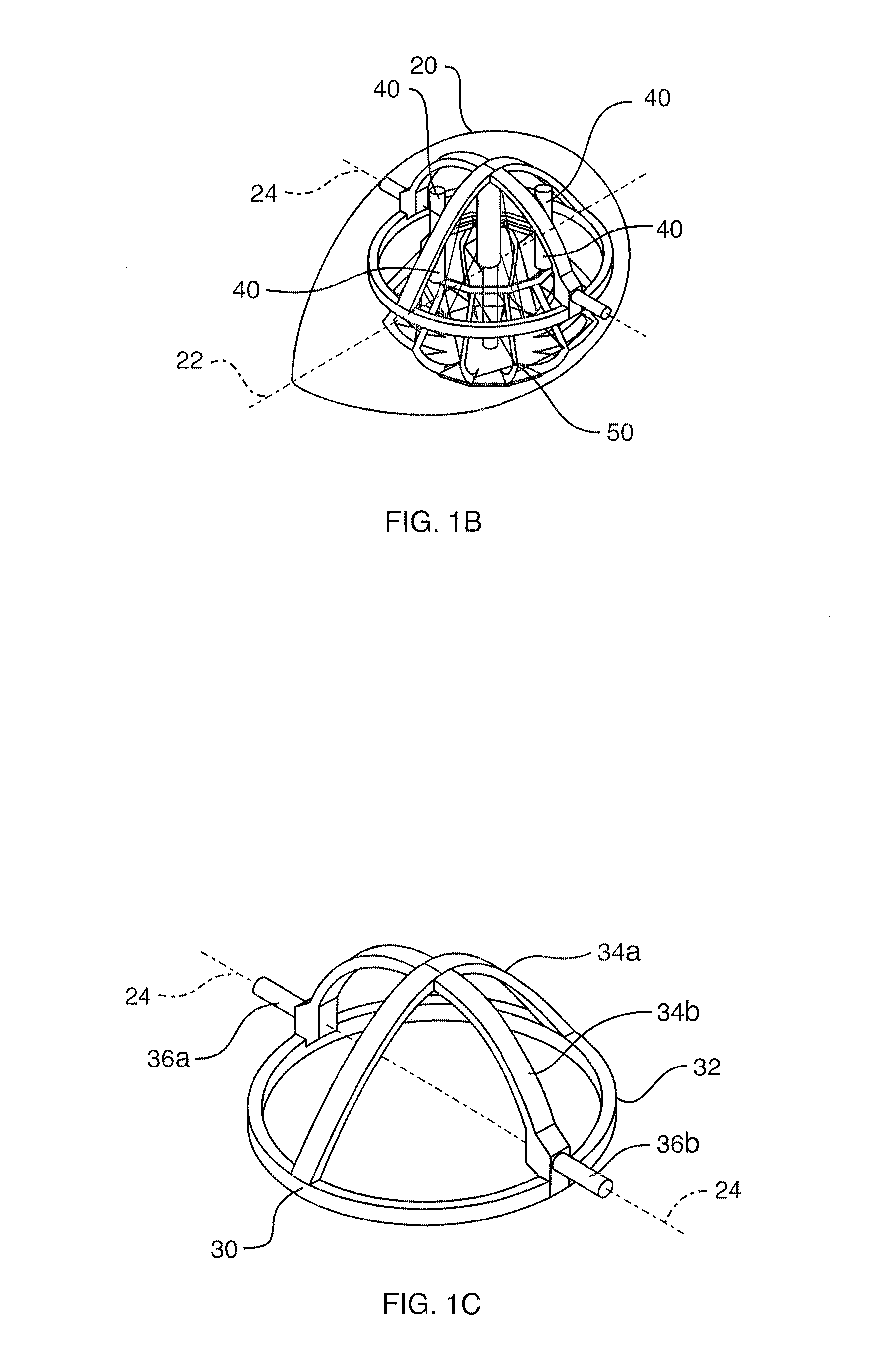Stabilization system for sensors on moving platforms
a technology of stabilization system and sensor, which is applied in the direction of acceleration measurement, antenna details, and reradiation, can solve the problems of more problematic rotational acceleration, insufficient suspension rotation isolation, and unacceptable noise levels, and achieve the effect of optimizing the mass balance of the instrumentation platform and slight bias
- Summary
- Abstract
- Description
- Claims
- Application Information
AI Technical Summary
Benefits of technology
Problems solved by technology
Method used
Image
Examples
Embodiment Construction
[0066]Principal Utility of the Invention:
[0067]The present invention is a new airborne bird containing several component systems. Together with its interior systems and while it is being towed from a helicopter or other aircraft, the bird measures three-component magnetic field data across a wide range of frequencies, especially including the low frequency band from 1 Hz to 25 Hz. The principal application of the invention is in geophysical exploration to detect zones of enhanced electrical conductivity (“Conductors”) in the Earth and to characterize the time-varying nature of electrical conductivity in the earth (“Polarization”) through the observed magnetic fields. These time-varying magnetic fields are often diagnostic of mineral and petroleum deposits, lithological and structural variations in ground, aquifers and contamination plumes, and man-made objects such as fences, pipelines, ordnance and treasure.
[0068]The present invention is the first device which will allow a user to ...
PUM
 Login to View More
Login to View More Abstract
Description
Claims
Application Information
 Login to View More
Login to View More - R&D
- Intellectual Property
- Life Sciences
- Materials
- Tech Scout
- Unparalleled Data Quality
- Higher Quality Content
- 60% Fewer Hallucinations
Browse by: Latest US Patents, China's latest patents, Technical Efficacy Thesaurus, Application Domain, Technology Topic, Popular Technical Reports.
© 2025 PatSnap. All rights reserved.Legal|Privacy policy|Modern Slavery Act Transparency Statement|Sitemap|About US| Contact US: help@patsnap.com



